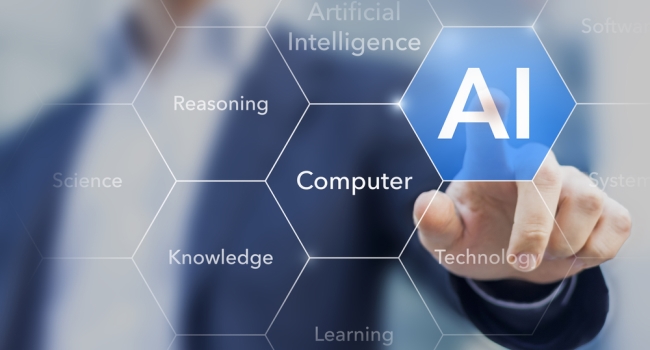
Online Exclusive: Can Artificial Intelligence Solve the Cybersecurity Talent Drain?
Leveraging artificial intelligence and machine learning allows organizations to enjoy real time protection and risk identification, significantly reducing security risks without the need to increase staff.
- By Santosh Varughese
- Sep 23, 2016
There is a persistent danger in the cybersecurity field that threatens every industry and organization and it is not coming from a foreign country or a group of rouge criminals. The demand for cybersecurity professionals has outstripped supply, and this shortage has reached critical levels. According to the Peninsula Press analysis of data from the Bureau of Labor Statistics, more than 209,000 cybersecurity jobs remain unfulfilled, and that number is expected to grow even larger in the next few years.
Since the massive Target breach brought the issue of cybersecurity to the forefront of public awareness, countless organizations have seen their systems hacked and valuable data stolen including UPS, Sony, Chase, Home Depot, and Anthem. In this acrimonious election year, both the DNC and RNC have been hacked to embarrassing results. Is it any wonder that the Bureau of Labor Statistics estimate demand for cybersecurity to grow 53 percent over the next two years?
Some efforts are underway to rectify the talent shortage. The government has leveraged millions in federal grants to help organizations train, develop, and retain cybersecurity professionals for critical industries like healthcare. Cisco announced in June it would invest $10 million in scholarships to help bridge the cybersecurity talent gap. More and more healthcare organizations are developing internal initiatives to develop workers for cybersecurity positions. However, while these strategies are admirable and will certainly secure more skilled workers in the long run, they do little to rectify the threat caused by the immediate lack of talent.
With no immediate relief in sight for the cybersecurity talent drought, new cybersecurity solutions that leverage the automation afforded by machine learning and artificial intelligence may prove the solution to the healthcare and great security industries’ problems.
Leveraging artificial intelligence and machine learning allows organizations to enjoy real time protection and risk identification, significantly reducing security risks without the need to increase staff. This involves the use of behavior analysis and is made available through the rapid advancement of artificial intelligence and data storage technologies over the last few years. Sometimes referred to as ambient surveillance, these programs constantly monitor networks and applications hosting sensitive data and are capable of detecting threats in real time. The technology generates baseline behavioral patterns for users on a network or interacting with an application or database, and can immediate detect unauthorized usage even if hackers are using stolen login credentials.
The technology is advanced, but the core concept is simple. A baseline pattern of user behavior is established by the program. Once these baseline parameters are established, the AI program constantly surveys and guards the system in the background, and any actions that deviate from the baseline pattern, such as logging in from a new location or accessing a part of the system the user normally doesn’t access, are detected in real time. With concrete information, IT personnel can then rapidly respond to the situation with a targeted response, saving time and manpower.
Because the AI program is constantly monitoring and assessing the actions of every user, it can work independently to detect and flag violations without the need for extra manpower. Most programs that utilize this technology are also self-improving, meaning that the more it learns about the network and user habits, the more accurate it becomes with its detection of misuse. This reduces the need to hire and train personnel to constantly update and learn the new protocols associated with traditional firewalls and intrusion detection systems. This also means that most organizations that utilize AI can achieve the same or even greater overall cybersecurity protection without as much manpower. The AI takes over most of the monitoring and detection duties, with only a small team of professionals required to respond to intrusions flagged by the system.
The AI system also offers better protection than traditional monitoring methods. No matter how much money and time organizations spend on scouting and training cybersecurity talents, gaps in security are always left by human errors. Whether through negligence, bias, or simply poor training, human agents can often interfere with the very security protocols they are meant to implement, leading to more problems and the need for more manpower – both to oversee them and to fix any problem that arise from human error. This problem is greatly diminished when an AI program does most of the primary monitoring and heavy lifting.
Also facilitating the growth of availability of AI is the continued reduction in cost for components such as data storage, memory and processing power. As cloud computing and “big data” continue to become more accessible and affordable, more and more companies can harness the power of AI. Even five years ago this would have been almost unthinkable and unaffordable save for the very large enterprises. Moore’s Law only applied to integrated circuits, but a similar effect is being seen throughout the entire field of computing.
With the increased adoption of machine learning and artificial intelligence in the cybersecurity field, the shortage of cybersecurity talent will begin to alleviate. Cybersecurity professionals will be freed from mundane surveillance, updating, and maintenance activities required of traditional cybersecurity solutions and can focus on developing more innovative solutions for IT infrastructure across their organization. AI can help the industry fulfill the old adage of working “smarter, not harder” and help end the risk created by the cybersecurity talent shortage.